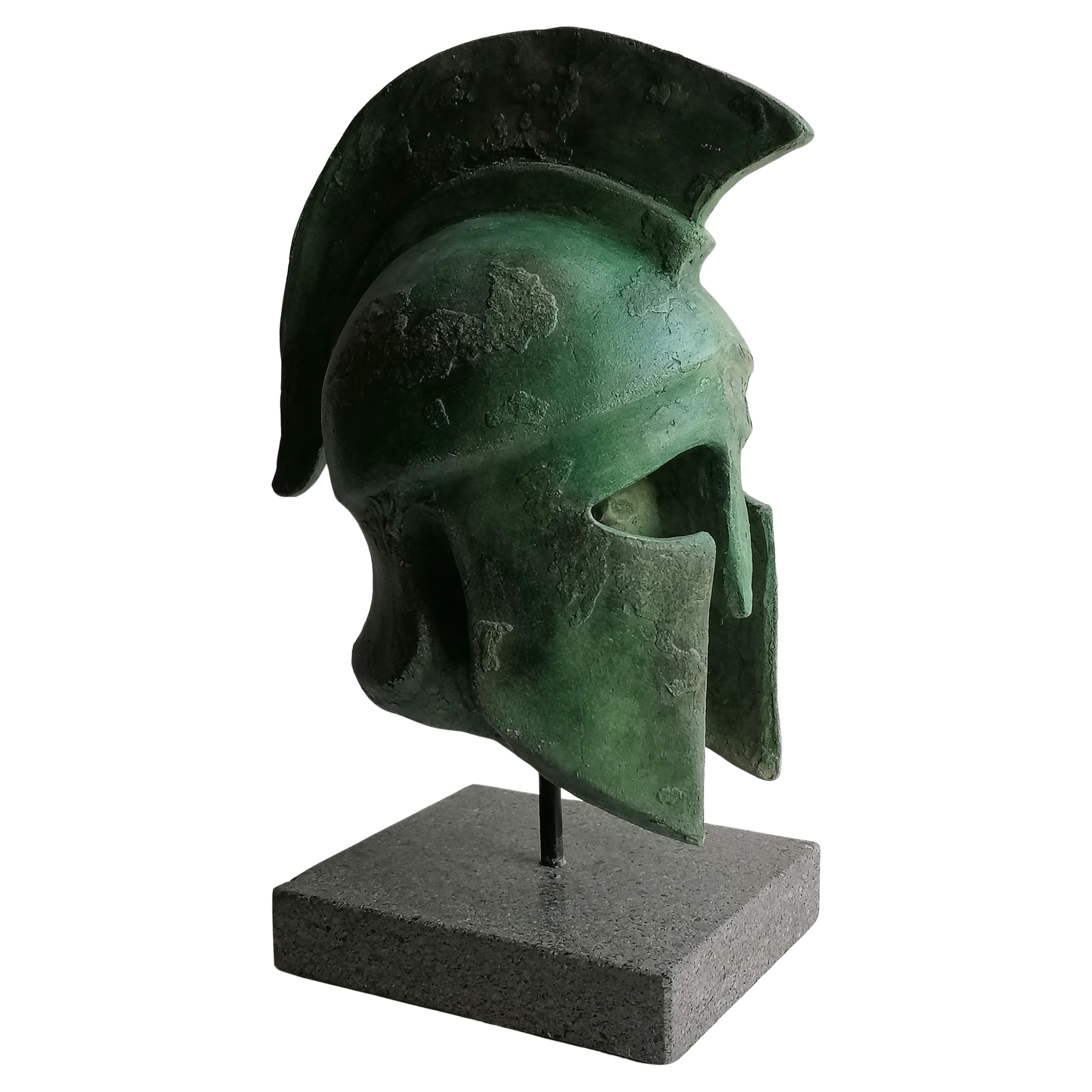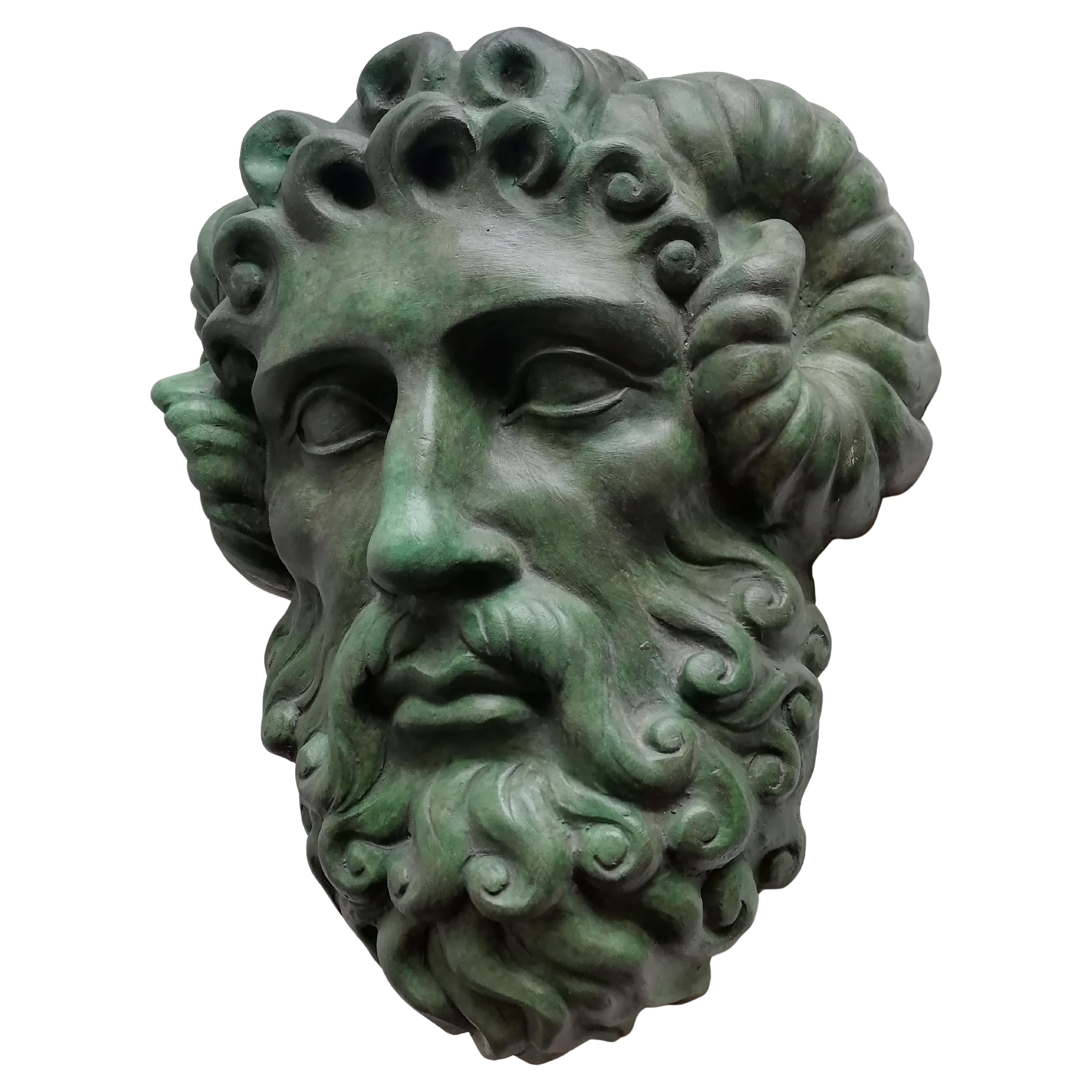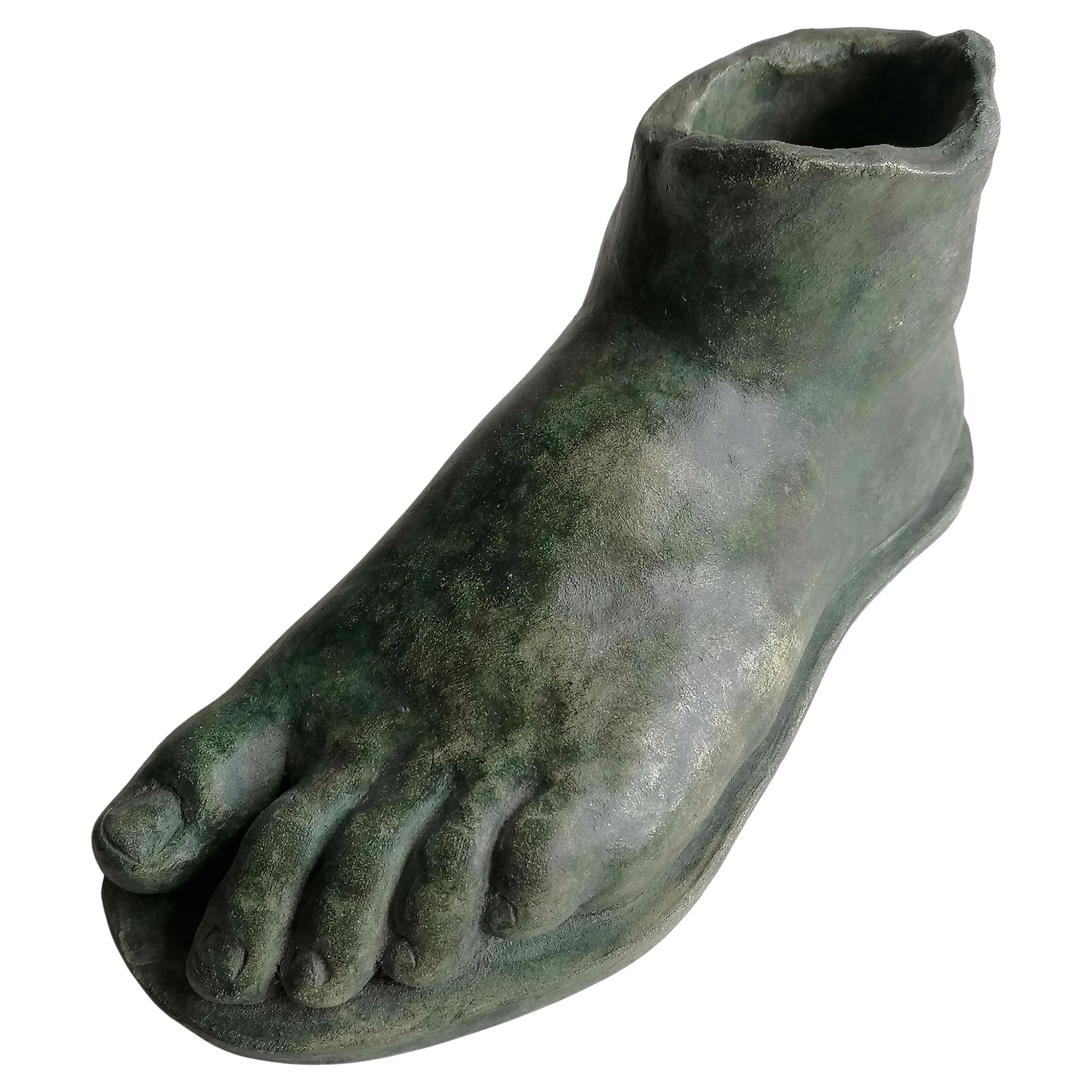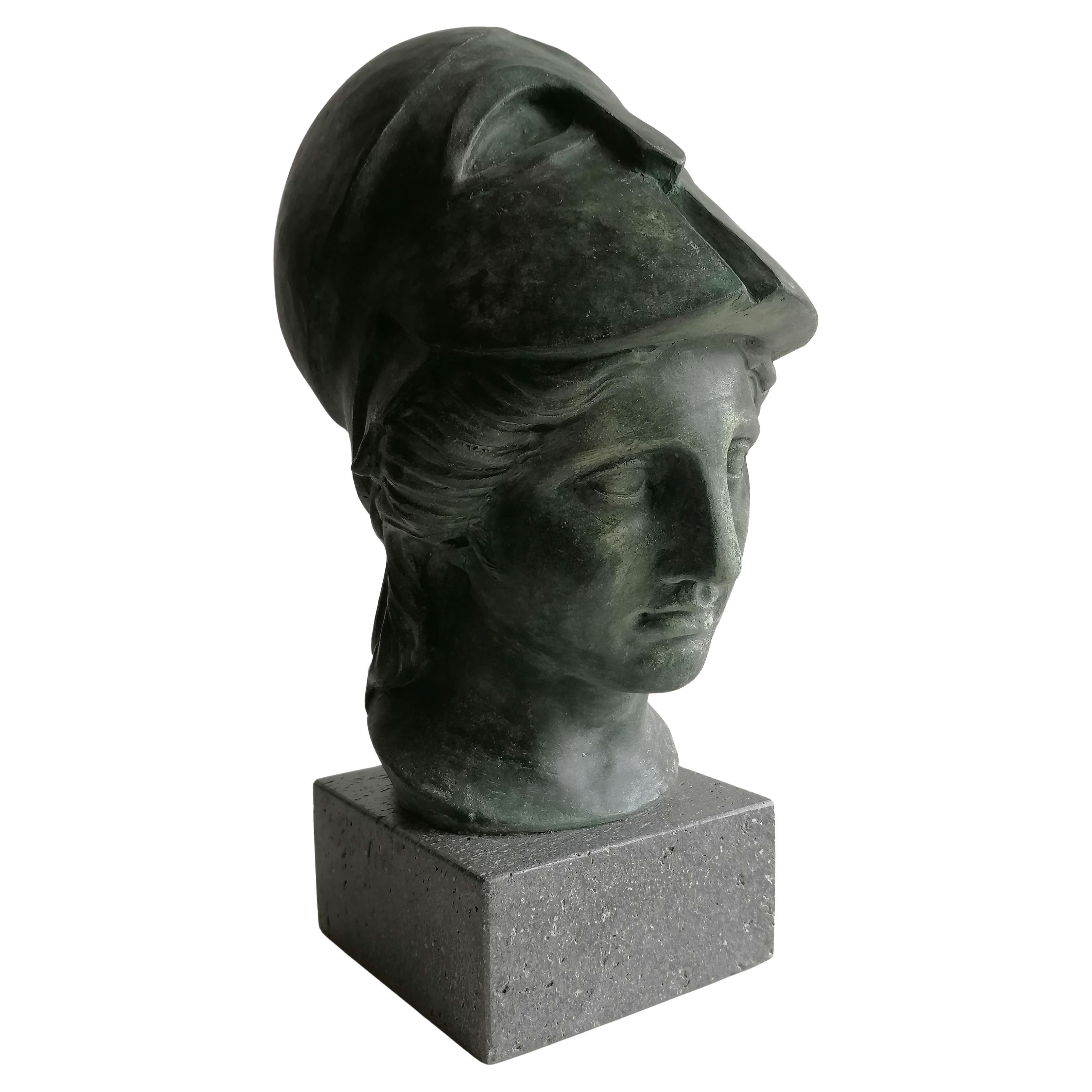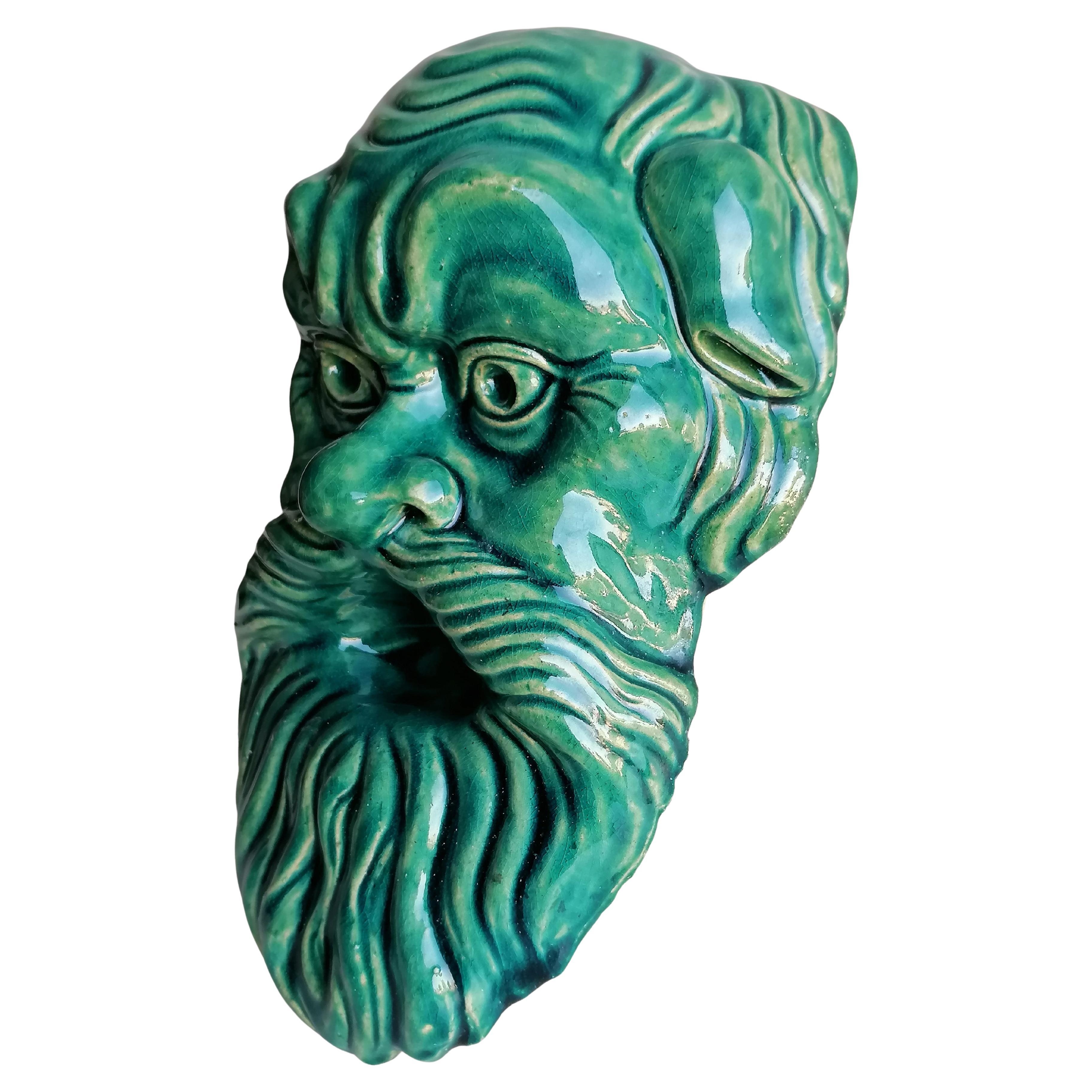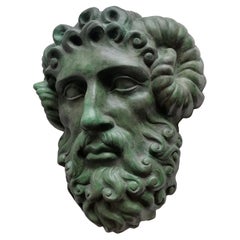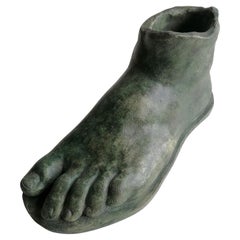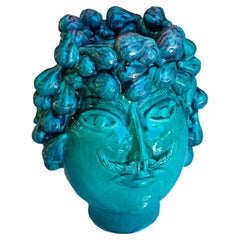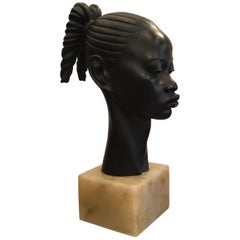Items Similar to Greek Corinthian helmet sculpture handmade on ceramic -made in Italy
Want more images or videos?
Request additional images or videos from the seller
1 of 13
Greek Corinthian helmet sculpture handmade on ceramic -made in Italy
$564.67
£413.51
€470
CA$768.66
A$861.57
CHF 448.59
MX$10,520.08
NOK 5,695.48
SEK 5,398.81
DKK 3,576.84
Shipping
Retrieving quote...The 1stDibs Promise:
Authenticity Guarantee,
Money-Back Guarantee,
24-Hour Cancellation
About the Item
The Corinthian helmet was the type of Greek helmet that offered the best protection in battle for the head in ancient Greece.
In ancient Rome it was introduced either by the Etruscans or the peoples of Magna Graecia but, because of its very high cost, it was used only by the wealthiest Roman citizens.
corinthian helmet, Greek ceramic helmet, glazed pottery.
Corinthian helmet hand-molded on ceramic, later glazed.
dimensions: h 24 x 23 x 13 cm kg 2
original creation by Laboratorio Todini -Tarquinia-Italy
with quality certification from the Lazio region
- Creator:Laboratorio Todini (Artist)
- Dimensions:Height: 9.45 in (24 cm)Width: 5.12 in (13 cm)Depth: 9.06 in (23 cm)
- Style:Classical Greek (In the Style Of)
- Materials and Techniques:
- Place of Origin:
- Period:
- Date of Manufacture:2005
- Production Type:New & Custom(Limited Edition)
- Estimated Production Time:Available Now
- Condition:
- Seller Location:Tarquinia, IT
- Reference Number:1stDibs: LU9536241112962
About the Seller
5.0
Gold Seller
Premium sellers maintaining a 4.3+ rating and 24-hour response times
1stDibs seller since 2023
21 sales on 1stDibs
Typical response time: 4 hours
- ShippingRetrieving quote...Shipping from: Tarquinia, Italy
- Return Policy
Authenticity Guarantee
In the unlikely event there’s an issue with an item’s authenticity, contact us within 1 year for a full refund. DetailsMoney-Back Guarantee
If your item is not as described, is damaged in transit, or does not arrive, contact us within 7 days for a full refund. Details24-Hour Cancellation
You have a 24-hour grace period in which to reconsider your purchase, with no questions asked.Vetted Professional Sellers
Our world-class sellers must adhere to strict standards for service and quality, maintaining the integrity of our listings.Price-Match Guarantee
If you find that a seller listed the same item for a lower price elsewhere, we’ll match it.Trusted Global Delivery
Our best-in-class carrier network provides specialized shipping options worldwide, including custom delivery.More From This Seller
View AllHandmade Greek helmet sculpture on bronze patinated ceramic -made in Italy
By Laboratorio Todini
Located in Tarquinia, IT
The Corinthian helmet was the type of Greek helmet that offered the best protection in battle for the head in ancient Greece.
In ancient Rome it was introduced either by the Etruscan...
Category
Early 2000s Italian Classical Greek Figurative Sculptures
Materials
Ceramic
Scultura di elmo greco corinzio fatta a mano su marmo grigio -made in Italy
By Laboratorio Todini
Located in Tarquinia, IT
L'elmo corinzio era la tipologia di elmo greco che offriva la miglior protezione in battaglia per la testa nell'antica Grecia.
Nell'antica Roma venne introdotto o dagli Etruschi o da...
Category
Early 2000s Italian Classical Greek Figurative Sculptures
Materials
Marble
Giove Hammon -scultura ceramica refrattaria patina bronzo -made in Italy
By Laboratorio Todini
Located in Tarquinia, IT
Giove Ammone, Zeus Hammon, Giove ceramica, mascherone ceramica
Giove Hammon -mascherone da parete - modellato a mano su ceramica refrattaria, patinato bronzo.
dimensioni: h cm 33 x 2...
Category
Early 2000s Italian Greco Roman Figurative Sculptures
Materials
Ceramic
Classic foot sculpture molded in bronze patina ceramic-made in Italy
By Laboratorio Todini
Located in Tarquinia, IT
Sculpture foot fragment, ceramic foot, bronze foot
Bronze patinated light ceramic sculpture
light refractory ceramic, bronze patinated.
Classic bronze ceramic foot
dimensions: 26x11...
Category
Early 2000s Italian Classical Greek Figurative Sculptures
Materials
Ceramic
bronze patinated ceramic Athena sculpture -made in Italy
By Laboratorio Todini
Located in Tarquinia, IT
athena sculpture, Minerva sculpture, Athena ceramic bronze, Roman Minerva ceramic bronze
Bronze patinated refractory ceramic bronze Athena head sculpture placed on a volcanic stone b...
Category
2010s Italian Classical Greek Busts
Materials
Ceramic
Ceramic glazed mask -Satyr_made in Italy
By Laboratorio Todini
Located in Tarquinia, IT
Satyr, ceramic satyr, ceramic maskerone
Glazed satyr maskerone -wall maskerone - hand molded on refractory ceramic, decorated , glazed
dimensions: h 29 x 18 x 9 cm kg 1.4
original c...
Category
2010s Italian Classical Roman Decorative Art
Materials
Ceramic
You May Also Like
Il Moro della Piana dei Fichi Sculpture
By Patrizia Italiano
Located in Milan, IT
This gorgeous Moor's head from the Sicilian tradition is characterized by an extraordinary wreath made of 120 figs in relief, sculpted and decorated by hand in fine shades of crystal...
Category
2010s Italian Vases
Materials
Ceramic
$1,944 / item
A.Giannelli - Scultura in ceramica e base di marmo - Made in Italy 1960
By Giannelli
Located in Milano, IT
A.Giannelli - Busto di donna africana in ceramica, firmata A. Giannelli, base in marmo,
Perfetto stato.
Category
Vintage 1960s Italian Other Figurative Sculptures
Materials
Marble
$1,730 Sale Price
20% Off
Testa Di Fauno Statue
By Fonderia Artistica Ruocco
Located in Milan, IT
This exquisite piece represents the head of a bearded faun, clearly depicted with his goat horns and elongated ears. The faun was the Roman equivalent of the ancient Greek satyr, a m...
Category
2010s Italian Statues
Materials
Marble, Bronze
$2,766 / item
Large Ceramic Sculpture 1968 Antonio Lucietti
Located in L’ISLE-SUR-LA-SORGUE, FR
Very large and originale ceramic sculpture of impressive finesse in its execution.
This artist only created one piece per year.
Interior and exterior enamel.
Unique piece made in 1...
Category
Vintage 1960s Italian Mid-Century Modern Abstract Sculptures
Materials
Ceramic
Ceramic Sculpture by Umberto Ghersi, Italy
By Umberto Ghersi
Located in Milan, Italy
Ceramic sculpture by Umberto Ghersi, 1960. Signed.
Biography:
Son of the ceramist Angelo and descendant of a family of Albisola majolica makers Umberto Ghersi, born in 1913 in Albis...
Category
Vintage 1970s Italian Modern Animal Sculptures
Materials
Ceramic
Ceramic Sculpture Unique Piece by Agostino Ferrari
By Agostino Ferrari
Located in Milan, Italy
Ceramic sculpture created by Agostino Ferrari. Unique piece. Signed and numbered.
Biography
Agostino Ferrari was born in Milan in 1938. Attracted by the art world since childhood, a...
Category
Early 2000s Italian Modern Figurative Sculptures
Materials
Ceramic
More Ways To Browse
African And Sculpture And Man
Antique French Wood Statues
Antique Jester
Bronze Breast Sculpture
Brutalist Sculpture Woman
Hercules Bronze
Lalique Woman
Maritime Sculpture
Mexican Statue
Roman Soldier Sculpture
16th Century Cast Bronze
Austrian Erotic Bronze
Bread Sculpture
Bronze Pompeii
Bronze Sculpture Of Mercury
Goddess Minerva
Metal Mannequin
Olympus Furniture
